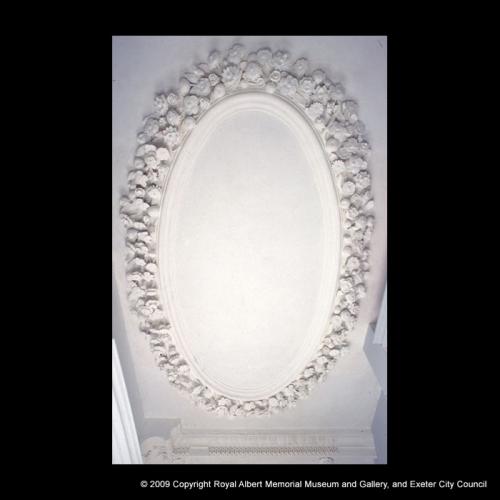Plaster ceiling and cornice from the Half Moon Hotel, Exeter, c 1680–90
Back to Time Period
This impressive ceiling was salvaged by our museum in 1913, when the Half Moon Hotel, which stood at the corner of High Street and Bedford Street, was demolished. The celebrated Dellar's Café replaced it.
Devon is a stronghold of the traditional plasterer's craft, and this ceiling belongs to its most spectacular period at the end of the 17th century. Such plasterwork was formed in the following manner. First rows of close-set laths were nailed to the floor joists above. Then a thick backing layer of cob plaster containing much horse- or cow-hair was squeezed between the laths. A second layer of plaster and finely chopped animal hair was then applied, followed by a finishing coat of pure white lime plaster in which the detail was modelled and cast.
In this period Classical fashions spread from London and the Court to the provinces, introducing a fashion for wreaths and garlands in high relief. The central oval wreath and the swags of the cornice were achieved by modelling the flowers in the workshop on armatures of wood; these were pushed into the wet plaster and gripped by the fibrous horsehair.
The name of the craftsman who made the ceiling is not firmly known, but it may well have been Thomas Lane, who made the ceiling of the neighbouring New Inn in similar style in 1689.
Acknowledgments: RAM Museum



















